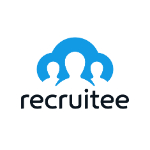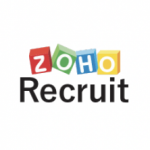An Applicant Tracking System (ATS) is designed to simplify and optimize the Applicant Tracking process, making it more efficient and effective. Using a centralized platform, recruiters can collect and view applicants, follow their progress, and filter them based on their qualifications, streamlining the recruitment process.
In the dynamic realm of talent acquisition, the efficiency of your hiring process can significantly impact your ability to attract top talent. Applicant tracking, a crucial element of recruitment, involves the systematic management of job applications to streamline the hiring workflow.
It goes beyond mere resume collection, it ensures fair, swift, and effective evaluation of candidates. For HR professionals, hiring managers, business owners, talent acquisition teams, HR tech enthusiasts, optimizing the applicant tracking process is essential.
This guide explores practical strategies and tools to elevate your applicant tracking efforts, enhancing both candidate experience and overall hiring efficiency.
Since its inception in the late 1990s, Applicant Tracking Systems have evolved from basic resume databases to sophisticated tools that automate and streamline the entire recruitment lifecycle. Initially designed to replace manual, paper-based processes, applicant tracking process now serves as central hubs for managing job postings, applicant data, interview schedules, and hiring decisions. They enable HR departments to handle large volumes of applications efficiently and reduce time-to-hire significantly.
Despite their benefits, ATS faces several challenges that can impact recruitment outcomes. One significant issue is the over-reliance on keyword matching, which can sometimes prioritize technical skills over broader qualifications or soft skills crucial for cultural fit and long-term success.
This approach may inadvertently exclude highly qualified candidates whose resumes do not precisely match predefined criteria. Candidate experience is another critical concern. The automated nature of applicant tracking process can lead to impersonal interactions, delayed responses, or even silence, which can deter top talent from engaging with the organization in the future.
Integrating applicant tracking process with other HR systems and maintaining data consistency across platforms also presents technical challenges that organizations must navigate to ensure seamless operations.
To harness the full potential of ATS, organizations should adopt best practices that enhance efficiency and effectiveness:
Find Out More: Challenges of Managing Payroll for Remote Employees
Modern ATS offer advanced functionalities that go beyond basic applicant tracking:
Improving candidate experience is crucial for attracting top talent:
Efficient recruitment workflows are essential for maintaining momentum and agility:
Also Read: How Mobile Recruitment Is Streamlining the Hiring Process
Protecting candidate data and ensuring compliance with privacy regulations are paramount:
Technological advancements continue to reshape ATS capabilities:
Several ATS platforms dominate the market, each offering unique features tailored to diverse organizational needs:
1. Workday: Known for its comprehensive HR management suite integrating applicant tracking process with other HR functions.
2. iCIMS: Recognized for its scalability and customizable solutions catering to both small businesses and large enterprises.
3. Greenhouse: Focused on optimizing the candidate experience through intuitive design and robust analytics capabilities.
4. Jobvite: Offers social recruiting features and candidate relationship management tools to nurture talent pipelines effectively.
5. BambooHR: Noted for its user-friendly interface and customizable workflows that streamline recruitment and onboarding processes.
Selecting an ATS requires careful consideration of organizational requirements and system capabilities:
Successful ATS implementation hinges on strategic planning and stakeholder engagement:
Illustrative case studies demonstrate ATS success stories and lessons learned:
Conclusion
Optimizing your applicant tracking process is crucial for enhancing efficiency and attracting top talent. By adopting modern ATS technologies and best practices, you streamline workflows, improve candidate experiences, and gain insights that drive smarter hiring decisions.
Whether you're a seasoned HR professional, business owner, or job seeker, investing in these tools is key to achieving your recruitment goals and becoming an employer of choice. Embrace these strategies to transform your hiring process and build a stronger workforce for the future.
1. What are some best practices for customizing ATS workflows to fit my company’s hiring needs?
Answer: Customizing ATS workflows involves mapping out your recruitment process and aligning the ATS settings with your specific needs. Best practices include creating custom job requisitions, configuring approval processes, setting up automated reminders and follow-ups, and integrating with other HR tools. Regularly reviewing and adjusting workflows based on feedback and performance data can also optimize efficiency.
2. How can I leverage data and analytics from my ATS to make better hiring decisions?
Answer: Utilize ATS analytics to track key performance indicators (KPIs) such as time-to-fill, cost-per-hire, and source of hire. Analyze trends in candidate quality, source effectiveness, and recruitment bottlenecks to make data-driven decisions. Regularly review reports and dashboards to identify areas for improvement and adjust strategies accordingly.
3. What are some common mistakes to avoid when optimizing an applicant tracking process?
Answer: Common mistakes include neglecting to train your team on ATS functionalities, failing to regularly update and maintain the system, overlooking data privacy and compliance issues, and not integrating the ATS with other HR tools. Additionally, avoid using generic workflows that don’t align with your specific recruitment needs and ensure that the system is user-friendly for both recruiters and candidates.

Subscribe & get all related Blog notification.
Easily find the ideal software for your business with our extensive software database.
Explore Software




Post your comment